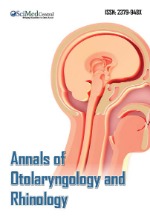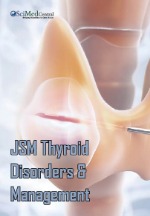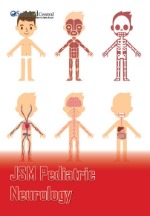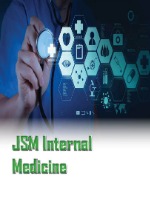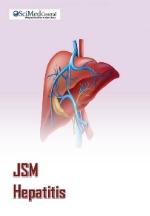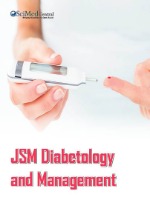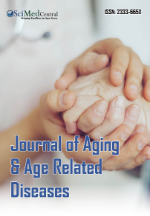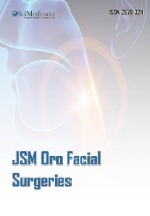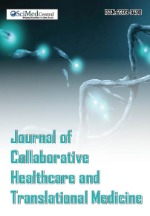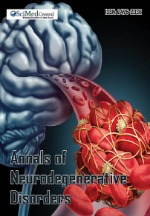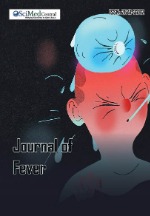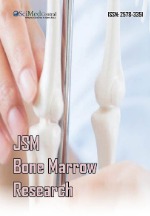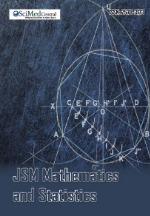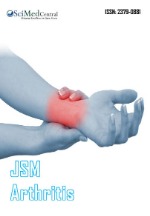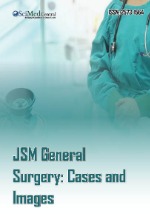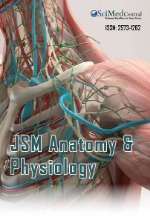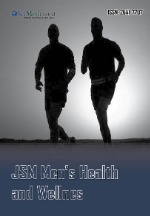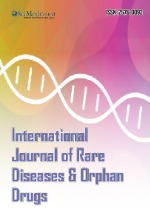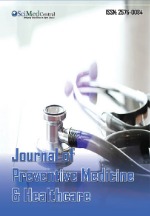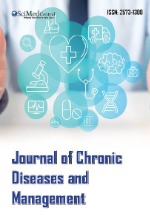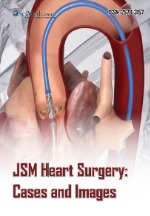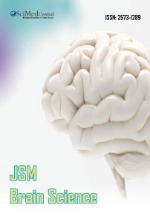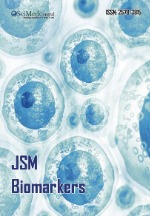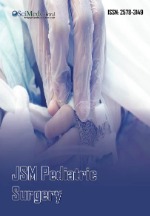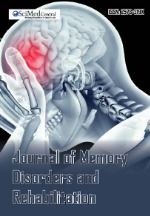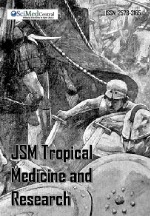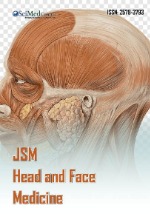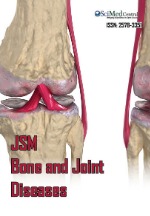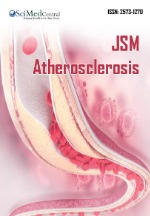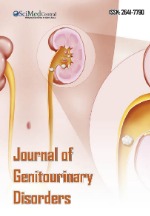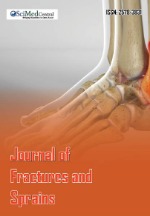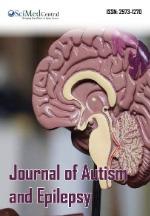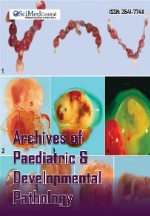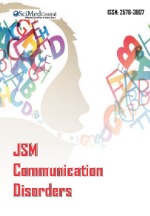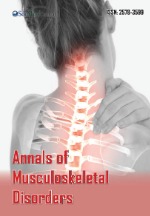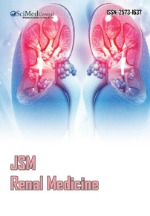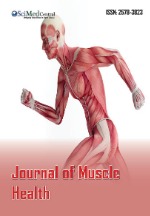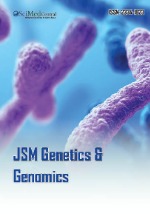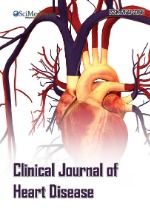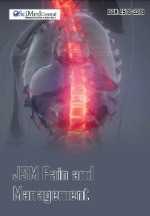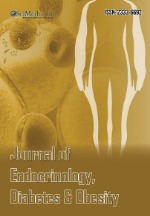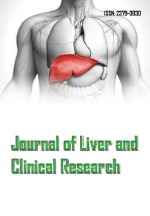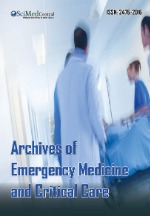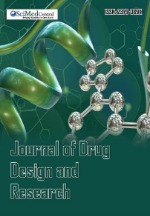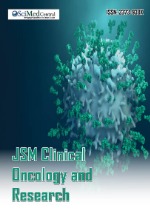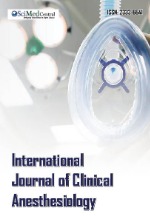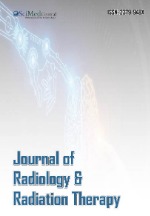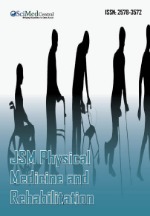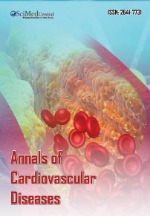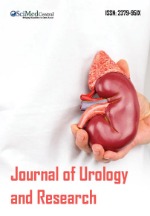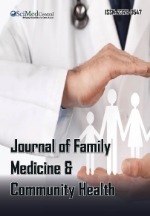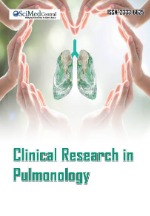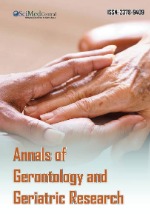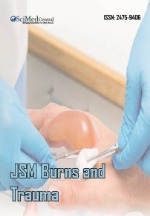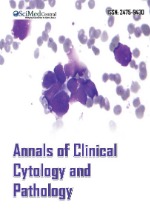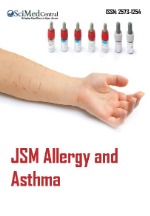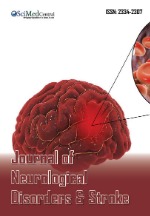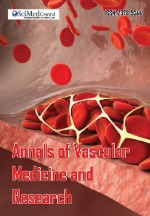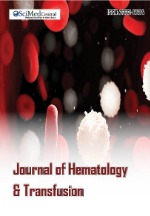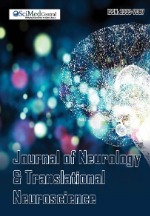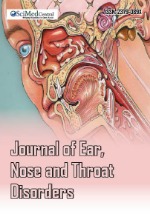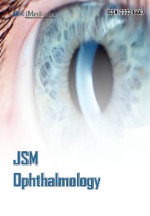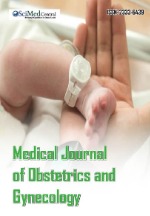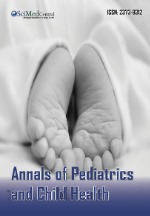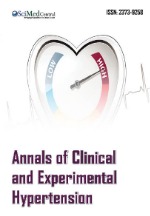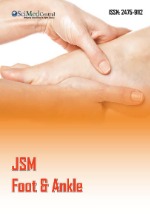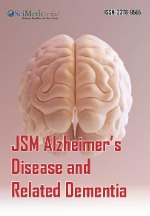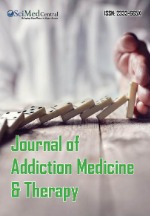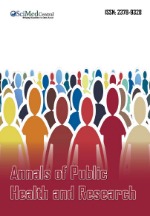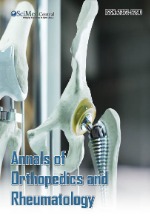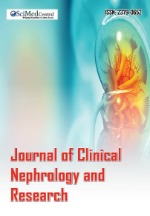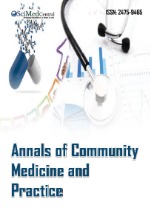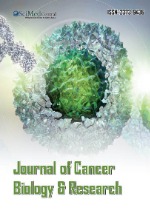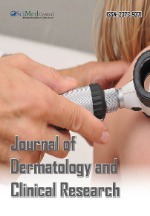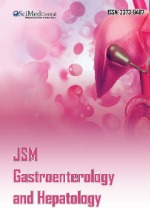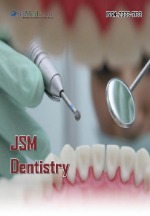Development of a Checklist of Elements Supporting Clinical Activities in the Optimised Recovery After Trauma (ORAT) Program
- 1. Clinical Director, Te Manawa Taki Trauma System, Health New Zealand -Waikato, Hamilton, New Zealand; The University of Auckland, Waikato Clinical School, Hamilton, New Zealand.
- 2. Research Manager, Te Manawa Taki Trauma Research Centre, Health New Zealand -Waikato, Hamilton, New Zealand
ABSTRACT
Background: Trauma patients with severe or multiple injuries are at risk of losing critical clinical information as they transition through hospital services and discharge process. When patients are transferred between wards or services, valuable experiential and documented data may be lost, impacting caregivers’ ability to address the patients’ holistic needs.
Aim: This paper aims to describe the Optimised Recovery After Trauma (ORAT) framework, which seeks to minimise information loss and enhance communication among multidisciplinary teams, clinical services, and facilities to improve transitions of care. The ORAT program focuses on improving care delivery and reducing inequities by using iterative, comprehensive information gathered and used throughout complex patient journeys.
Methods: Clinical specialty groups at a Level 1 Trauma Centre in New Zealand identified key information elements to provide a holistic view of trauma patients and their support systems. These elements incorporated health domains and priorities from the World Health Organisation’s ICF, Pae Ora, and Te Whare Tapa Wh?, which represents M?ori health principles in New Zealand. A minimum dataset was created on a real-time, accessible clinical information platform, supporting activities such as trauma ward rounds, multidisciplinary meetings, discharge planning, and follow-up clinics.
Results: Checklists and forms were developed, reviewed, and authorised for clinical use by multidisciplinary team members. Following an initial implementation phase, these tools were integrated into the ORAT program.
Conclusions: The ORAT program’s holistic elements and forms facilitate accurate and comprehensive information exchange, improving clinical effectiveness and hospital transitions. These tools are now routinely used by staff managing complex trauma patients at a Level 1 trauma centre in New Zealand and further afield. A post-implementation trial will evaluate the utility and usability of the ORAT elements and forms.
KEYWORDS
- Trauma
- Optimal Recovery
- Best Practice
- Clinical Information
- Holistic Care Model
- New Zealand
INTRODUCTION
Patients with severe or multiple injuries require comprehensive and coordinated care to ensure optimal outcomes. Coordination and integration lead to improved communication between teams, earlier identification and management of risks, development of comprehensive and efficient treatment plans, and higher patient satisfaction [1-4]. Davenport et al. [5], demonstrated that specialized trauma services that offer expert oversight, performance improvement programs, and integrated care from admission to rehabilitation, could lead to reduced mortality in severely injured patients [6,7]. Bouman et al. [8], showed that early rehabilitation and intervention led to improved quality of life after discharge and may optimize resource utilization through early transfer to and from acute services.
The traditional clinical processes in trauma care involve a combination of computer-based documentation, handwritten notes, and verbal handovers supplemented by follow-up phone calls and discussions to clarify clinical information and plans [9]. This complexity creates opportunities for vital information to be lost during transitions between clinicians, services, and geographic locations that the patient traverses during their hospital admission [10]. Collecting and iteratively updating relevant information may prevent critical information loss, reduce confusion between care providers, and improve patients’ confidence that their personal information is being protected and used to their benefit. For busy clinical staff within and outside the hospital system, having a single repository of accurate and current clinical information may allow them to quickly understand and address the requirements of patients and their support systems.
Requirements for early treatment and risk mitigation in trauma care have been detailed by various authors [11-13], and previous studies have indicated the value of Multi-Disciplinary Team (MDT) in improving outcomes for complex patients [14- 16], including those in specific clinical environments [12,17,18]. Coordinated MDT activities provide better use of resources and enhanced outcomes for patients and their families [19]. Trauma MDTs typically involve medical staff, nurses, physiotherapists, speech and language therapists, dietitians, rehabilitation specialists, occupational therapists, social workers, counsellors and others involved in treatment and rehabilitation. The use of checklists for clinical care has been proven to enhance decision- making in MDTs [17,20], and daily MDT rounds might reduce the Length Of Stay (LOS) for trauma patients [21]. Adhering to the principle that the best practice for complex patients should be based on their needs [22], standardised and comprehensive checklists designed for ward-based trauma care, as well as before discharge or transfer, could serve as valuable tools for improving outcomes [16,23]. They can also establish a standard for measuring MDT team activity and ensuring thorough patient assessment, documentation, and intervention.
Patients transferred to regional trauma centers generally require sub-specialty intervention [5]. However, patients who don’t necessarily meet the criteria for transfer should still receive the best possible care at smaller hospitals, as long as there are skilled MDT members available [24]. In hospitals that do not hold regular MDT meetings for trauma patients, MDT members may work independently but still require current knowledge and coordination of the plans of other services to maximize their own effectiveness. To reduce inequity in service provision, the principles of Optimal Recovery After Trauma (ORAT) have been developed to standardised care, regardless of the size of the trauma-treating facility, even if there are limited clinical staff resources.
Essential to a holistic overview of patients is acknowledgment from clinical staff that variations in requirements and priorities in health are associated with specific cultural requirements of patients that may be different from their own [25]. This is particularly important in New Zealand (NZ), where significant health inequities exist and require focused interventions to resolve [26].
The aim of this paper is to describe a set of information elements within a specialize database that can be used to support decision-making in trauma patients with complex needs. The checklists are central to the ORAT program used by the Te Manawa Taki (TMT), formerly Midland Trauma System in NZ. The level of trauma care in TMT region (population 1,007,405) ranges from tertiary trauma center level (level 1) to small district hospitals. Within resource limitations it is expected that these facilities can provide a similar level of ward-based clinical care, regardless of trauma patient volumes.
Optimal Recovery After Trauma (ORAT) Program
The ORAT program is a care model that aims to standardize the delivery of best practices by defining the clinical elements that must be addressed during a patient’s journey. It maintains an up-to-date and accessible dataset on individual patients, which is used by clinical groups to define and address the needs of each patient. The concepts ORAT align closely with Te Whare Tapa Wh? – the cornerstones of M?ori Health [27], and Pae Ora; a holistic concept driving national healthcare in NZ that includes three interconnected elements: mauri ora (healthy individuals), wh?nau ora (healthy families) and wai ora (healthy environments) [24]. The key activities supported by ORAT include the daily trauma ward round, the trauma Multi- Disciplinary Meeting (MDM), discharge planning, and virtual outpatient follow-up clinic, known as the “Trauma Reach Clinic”.
Ward-round checklists are used as memory aids for clinical teams. ORAT baseline data is collected soon after a patient’s admission and recorded on the clinical workstation, which is available to MDT members or other authorized users. The program aims to improve communication among health professionals while minimizing duplication and confusion in complex care delivery.
ORAT focuses on clinical activities but recognizes the importance of patient’s cultural and family status, as well as their expectations of care, as an integral part of the quality assessment [28], and rehabilitation process. Concepts of equity, cultural needs, patient experience, and seamless progression to early rehabilitation, with a focus on key health domains defined by World Health Organization (WHO) [29], were considered when selecting elements. This is an essential feature in maximizing care in NZ’s cultural environment, where opportunities to eliminate inequities in health care delivery need to be actively sought and addressed [30]. Inclusion of the cornerstones of M?ori health into ORAT [26], is essential in NZ to reduce the health inequities. As a quality initiative, the ORAT Program requires hospitals to recognise the need for standardisation as a platform for quality improvement and commit to initiating some infrastructure and process changes to accommodate the program. This includes commencing regular trauma MDMs, defining pathways for resolution of identified issues, and ensuring that online form components of ORAT are available to all authorized personnel through regular clinical workstations. The ORAT program is a resource for MDT members in hospitals with or without specialized clinical trauma services and is designed to provide standardisation of care across clinical teams or hospitals with different capabilities.
The “Holistic Information Wedge” concept
The ORAT program is supported by an iterative database that maintains relevant information as patients move through different services and locations during their recovery. Information is updated daily by authorized users, and is readily available to clinical teams, minimizing the loss of critical information during transitions. Patient-specific information on the database is updated daily creating a growing “wedge” of relevant information during the journey. This helps new clinical personnel quickly assimilate complex historical and clinical information to address the patients’ needs. The database also generates comprehensive discharge plans containing curated holistic information for use by subsequent personnel, such as rehabilitation clinicians, general practitioners, health insurers, and others, to provide ongoing care.
MATERIALS AND METHODS
A literature review was performed to define general strategies and priorities for clinical service provision. This included Pae Ora [24], Te Whare Tapa Wh? – the cornerstones of M?ori Health [27] WHO International Classification of Functioning, Disability and Health: ICF. 2001 [31], NZ Health Quality and Safety Commission Clinical Governance Guide 2017 [32], and TMT Regional Trauma Guidelines [33]. A qualitative inquiry was conducted to produce a set of relevant information elements that can be used to support regular clinical activities. ORAT checklist elements were then selected by a working group of specialized trauma service clinicians and MDT members involved in daily care of complex trauma patients. Informal discussions with patients and their families were undertaken during the development phase to gain better understanding of their needs for relevant information and communication. This feedback was incorporated directly into the checklists.
The ORAT elements were then refined in consultation with 25 regional trauma nursing, medical, and allied professional staff at 6 District Hospitals in NZ that are linked within a regional Trauma System. The elements were applied within the ORAT Program at the regional level one trauma center for further development and testing. Te Puna Hauora, a governance group for M?ori Health in the region endorsed the concept and checklist elements, and appropriate security and privacy frameworks were employed [33]. The checklist elements were listed under several groups in the general order in which they will be discussed or recorded in the clinical activities: patients and processes; clinical status; clinical plans; contacts and supports; discharge and follow-up; and rehabilitation goals and risks. Specific combinations of key ORAT elements are arranged and utilized in a range of activities in ORAT program, including trauma ward round checklist, MDT meetings, and discharge planning. Individual elements can be extracted for limited and specific uses, such as specialty referrals.
Online access to the hospital clinical workstation was established to allow authorized MDT members to make real-time edits of the ORAT database, while providing read-only access to all hospital clinical staff. The forms were used by 18 trauma MDT members in one hospital over a period of 6 months and were authorized for use within that hospital. Iterative changes were made to address the information needs of clinicians and patients. Patients were selected by treating clinicians for the ORAT program if they had severe or multiple injuries and required multidisciplinary assessments and interventions to optimize function. At discharge, the ORAT information is transferred to a regional clinical portal, providing read-only access to authorized users across the TMT Region, including staff at other hospitals, general practitioners, and other primary healthcare providers.
RESULTS
Table 1 shows the final checklist elements determined through the iterative clinical development process. These were then included in forms for the clinical activities including: daily trauma ward rounds, MDMs, discharge planning and trauma follow-through clinic termed “Trauma Reach”.
Table 1: List of ORAT checklist elements applied to clinical activities
|
ORAT Checklist Elements |
Clinical Activities |
||
|
Ward Round |
MDM |
Discharge |
|
|
Patient and Processes |
|||
|
Patient identification and demography |
* |
* |
* |
|
Introductions: Clinicians, patients and family/ wh?nau |
* |
|
|
|
Event and processes documented |
* |
* |
* |
|
Trauma diagnoses confirmed |
* |
* |
* |
|
Comorbidities and medical risks confirmed |
* |
* |
* |
|
Pre-admission functional status |
* |
* |
* |
|
Imaging documented |
* |
* |
* |
|
Procedures listed |
* |
* |
* |
|
Insurance Status confirmed |
* |
* |
* |
|
Ethnicities and Tribal Associations |
* |
* |
* |
|
Cultural requirements detailed |
* |
* |
* |
|
Family/wh?nau and support person(s) identified |
* |
* |
* |
|
Communication and Interpretation requirements |
* |
* |
* |
|
Tertiary trauma survey completed |
* |
* |
|
|
Clinical Status |
|||
|
Clinical progress assessed |
* |
* |
* |
|
Pain level and plan reviewed |
* |
* |
* |
|
Cognition assessed |
* |
* |
* |
|
Fluid balance rationalized |
* |
* |
|
|
Bloods; biochemistry /haematology / other |
* |
* |
* |
|
Physiology System review: cardiac/respiratory / renal/gut/etc. |
* |
* |
* |
|
Sepsis screen: chest/urine/blood/IV lines/other |
* |
* |
|
|
Drains and catheters checked or necessary |
* |
* |
* |
|
Bowel and bladder cares reviewed |
* |
* |
* |
|
Wounds checked |
* |
* |
* |
|
Pins/casts/collar/traction/splintage reviewed |
* |
* |
* |
|
Pressure cares reviewed |
* |
* |
|
|
IV lines type duration and skin check |
* |
* |
|
|
Medications reviewed |
* |
* |
* |
|
DVT prophylaxis established |
* |
* |
* |
|
Nutritional status |
* |
* |
* |
|
Nutrition type quantity and route reviewed |
* |
* |
* |
|
Sleep/wake cycle reviewed |
* |
* |
* |
|
Communication assessment |
* |
* |
* |
|
Other issues and risks reviewed |
|
* |
* |
|
Clinical Plans |
|||
|
Medical and nursing plans confirmed |
* |
* |
* |
|
Allied Health plans confirmed |
* |
* |
* |
|
Mobilization limits confirmed and documented |
* |
* |
* |
|
Complications addressed |
* |
* |
* |
|
Risk mitigation plans defined and activated |
* |
* |
* |
|
Operating schedule + nil-by-mouth status confirmed |
* |
* |
|
|
Operative consents completed |
* |
* |
|
|
Plans clarified and agreed with patient and family/wh?nau |
* |
* |
* |
|
Questions answered, including likely discharge date |
* |
* |
* |
|
Next clinical review date and time scheduled |
* |
* |
* |
|
Repatriation and insurance services contacted (if required) |
* |
* |
* |
|
Contacts and Supports |
|||
|
Primary clinical team identified and documented |
* |
* |
* |
|
Assisting clinical teams identified and documented |
* |
* |
* |
|
Family/wh?nau contacts engaged and informed |
* |
* |
* |
|
Community and cultural supports documented |
* |
* |
* |
|
Repatriation and insurance services contacted (if required) |
* |
* |
* |
|
Enduring Power of Attorney (EPOA) |
* |
* |
* |
|
Te Whare Tapa Wh?nau Elements |
|||
|
1) Taha tinana (physical) |
* |
* |
* |
|
2) Taha wairua (spiritual) |
* |
* |
* |
|
3) Taha wh?nau (family and social) |
* |
* |
* |
|
4) Taha hinengaro (mental and emotional) |
* |
* |
* |
|
5) Whenua (environmental) |
* |
* |
* |
|
Discharge Plan and Follow-up |
|||
|
Date of discharge |
|
* |
* |
|
Accepted for transfer by: [name and number of clinician] |
|
* |
* |
|
Discharge handover to: [name and number of clinician] |
|
* |
* |
|
Follow-up appointments: dates, places, clinicians |
|
* |
* |
|
Special equipment provided |
|
* |
* |
|
District nurse contacted |
|
* |
* |
|
Post-discharge plans and destinations detailed |
|
* |
* |
|
Repatriation plans detailed |
|
* |
* |
|
Family/Wh?nau contacts engaged and informed |
* |
* |
* |
|
Functional status |
* |
* |
* |
|
Community services required |
|
* |
* |
|
Rehabilitation Goals and Risks |
|||
|
Rehabilitation goals defined: 3, 6 and 12 months |
|
* |
* |
|
Available for post-follow-up contact |
|
|
* |
|
Potential barriers to achieving optimal outcomes: |
|
|
|
|
1. Body Functions and Structures |
|
* |
* |
|
2. Activities and Participation |
|
* |
* |
|
3. External Influences |
|
* |
* |
|
4. Personal Factors |
|
* |
* |
DISCUSSION
Despite advances in digital clinical documentation, delivering up-to-date and relevant information to personnel treating complex trauma patients remains a challenge. Traditional clinical models of communication of clinical information are heterogeneous and not universally linked, providing ample scope for vital information to be lost during the transitions between clinical services and geographic locations that the patient traverses during their hospital admission. The ORAT program aims to improve patient outcomes by collecting, organizing, and presenting relevant, comprehensive information about individual patients. By developing the checklist in a pragmatic, iterative fashion, clinicians have improved access to crucial information, facilitated smoother transitions and communications with patients and their families, as well as MDTs. This approach has enabled clinicians to make well-informed decisions in a coordinated manner, benefiting patient care significantly.
The program uses standardised checklists within a structured clinical program for ward rounds, MDMs, and discharge planning, to assist in diagnosing, treating, and profiling the risks of complex trauma patients. It supports MDT members in staying engaged and well-informed about comprehensive clinical plans for individual patients while they are in the hospital.
The ORAT discharge plan translates curated information from the checklist to the patient and family, and is made available to rehabilitation and primary care providers. The generic nature of the clinical elements in the checklist can be applied to injured patients in hospitals with varying levels of capacity and capability.
MDT clinicians have embraced ORAT and assimilated it into routine MDT activities. The ORAT program is under continuous development and is expected to improve as the number of cases increase and feedback from a wider group of stakeholders is obtained and incorporate into the checklist items. A qualitative post-implementation trial is planned to assess the adoption and practical usefulness of the ORAT program across the TMT health region. Once the program is further developed and its practical use validated, it could serve as a valuable model for standardizing care in other facilities outside the TMT Region.
CONCLUSION
The ORAT database and checklists have been developed to supply relevant information elements to treating clinicians, patients and family at various stages in their clinical journey. The development of this checklist was prompted by the growing emphasis on improving patient outcomes through the systematic gathering, organizing, and presenting of relevant and comprehensive information about individual patients. Describing these accessible information elements can advance qualitative literature towards a more patient-centered approach, leading to better understanding and promotion of efficient actions and improved outcomes for this patient population.
ACKNOWLEDGEMENTS
The authors gratefully acknowledges the members of the Waikato Hospital Trauma Service, Waikato Hospital Trauma MDT, and trauma clinicians across Te Manawa Taki/Midland region of NZ for their invaluable contribution to element testing and feedback.
REFERENCES
- O’Leary KJ, Wayne DB, Haviley C, Slade ME, Lee J, Williams MV. Improving teamwork: impact of structured interdisciplinary rounds on a medical teaching unit. J Gen Int Med. 2010; 25: 826-832.
- Todd SR, McNally MM, Holcomb JB, Kozar RA, Kao LS, Gonzalez EA,et al. A multidisciplinary clinical pathway decreases rib fracture– associated infectious morbidity and mortality in high-risk trauma patients. Am J Surg. 2006; 192: 806-811.
- Randmaa M, Mårtensson G, Leo Swenne C, Engström M. SBAR improves communication and safety climate and decreases incident reports due to communication errors in an anaesthetic clinic: a prospective intervention study. BMJ Open. 2014; 4: e004268.
- Pronovost P, Berenholtz S, Dorman T, Lipsett PA, Simmonds T, Haraden C. Improving communication in the ICU using daily goals. J Crit Care. 2003; 18: 71-75.
- Davenport RA, Tai N, West A, Bouamra O, Aylwin C, Woodford M, et al. A major trauma centre is a specialty hospital not a hospital of specialties. Br J Surg. 2010; 97: 109-117.
- Ursic C, Curtis K, Zou Y, Black D. Improved trauma patient outcomes after implementation of a dedicated trauma admitting service. Injury. 2009; 40: 99-103.
- Walter E, Curtis K. The role and impact of the specialist trauma nurse: an integrative review. J Trauma Nurs. 2015; 22: 153-169.
- Bouman AIE, Hemmen B, Evers SMAA, van de Meent H, Ambergen T, Vos PE, et al. Effects of an Integrated ‘Fast Track’ Rehabilitation Service for Multi-Trauma Patients: A Non-Randomized Clinical Trial in the Netherlands. PloS one. 2017; 12: e0170047-e.
- Moore L, Lavoie A, Sirois MJ, Belcaid A, Bourgeois G, Lapointe J, et al. A comparison of methods to obtain a composite performance indicator for evaluating clinical processes in trauma care. J Trauma Acute Care Surg. 2013; 74: 1344-1350.
- King BJ, Gilmore-Bykovskyi AL, Roiland RA, Polnaszek BE, Bowers BJ, Kind AJ. The consequences of poor communication during transitions from hospital to skilled nursing facility: a qualitative study. J Am Geriatr Soc. 2013; 61: 1095-1102.
- Curtis K, Mitchell R, McCarthy A, Wilson K, Van C, Kennedy B, et al. Development of the major trauma case review tool. Scand J Trauma Resusc Emerg Med. 2017; 25: 20.
- Justice LB, Cooper DS, Henderson C, Brown J, Simon K, Clark L, et al. Improving Communication During Cardiac ICU Multidisciplinary Rounds Through Visual Display of Patient Daily Goals. Pediatr Crit Care Med. 2016; 17: 677-683.
- Mercedes A, Fairman P, Hogan L, Thomas R, Slyer JT. Effectiveness of structured multidisciplinary rounding in acute care units on length of stay and satisfaction of patients and staff: a quantitative systematic review. JBI Database System Rev Implement Rep. 2016; 14: 131-168.
- Ruchholtz S, Waydhas C, Lewan U, Piepenbrink K, Stolke D, Debatin J, et al. A multidisciplinary quality management system for the early treatment of severely injured patients: implementation and results in two trauma centers. Intensive Care Med. 2002; 28: 1395-1404.
- MacKenzie S, Kortbeek JB, Mulloy R, Hameed SM. Recent experiences with a multidisciplinary approach to complex hepatic trauma. Injury. 2004; 35: 869-877.
- Hilton G, Daniels K, Goldhaber-Fiebert SN, Lipman S, Carvalho B, Butwick A. Checklists and multidisciplinary team performance during simulated obstetric hemorrhage. Int J Obstet Anesth. 2016; 25: 9-16.
- Zakrison TL, Rosenbloom B, McFarlan A, Jovicic A, Soklaridis S, Allen C, et al. Lost information during the handover of critically injured trauma patients: a mixed-methods study. BMJ Qual Saf. 2016; 25: 929-936.
- Lamb BW, Sevdalis N, Vincent C, Green JS. Development and evaluation of a checklist to support decision making in cancer multidisciplinary team meetings: MDT-QuIC. Ann Surg Oncol. 2012; 19: 1759-1765.
- McSwain N, Rotondo M, Meade P, Duchesne J. A model for rural trauma care. Br J Surg. 2012; 99: 309-314.
- Bach JA, Leskovan JJ, Scharschmidt T, Boulger C, Papadimos TJ, Russell S, et al. The right team at the right time - Multidisciplinary approach to multi-trauma patient with orthopedic injuries. Int J Crit Illn Inj Sci. 2017; 7: 32-37.
- Dutton RP, Cooper C, Jones A, Leone S, Kramer ME, Scalea TM. Daily multidisciplinary rounds shorten length of stay for trauma patients. J Trauma. 2003; 55: 913-919.
- Amalberti R, Benhamou D, Auroy Y, Degos L. Adverse events in medicine: easy to count, complicated to understand, and complex to prevent. J Biomed Inform. 2011; 44: 390-394.
- Nakayama DK, Lester SS, Rich DR, Weidner BC, Glenn JB, Shaker IJ. Quality improvement and patient care checklists in intrahospital transfers involving pediatric surgery patients. J Pediatric Surg. 2012; 47: 112-118.
- Mnistry of Health. Pae Ora (Healthy Futures) Act 2022. In: Office PC, editor. Wellington. 2022.
- Brooks LA, Manias E, Bloomer MJ. Culturally sensitive communication in healthcare: A concept analysis. Collegian. 2019; 26: 383-391.
- Christey G, Soysa I, Smith A. Characteristics of low, moderate and high severity trauma hospitalisations in a health region of Aotearoa New Zealand-10-year review. N Z Med J. 2024; 137: 37-48.
- Mnistry of Health. M?ori health models – Te Whare Tapa Wh?. In: health M, editor. 2015.
- Doyle C, Lennox L, Bell D. A systematic review of evidence on the links between patient experience and clinical safety and effectiveness. BMJ Open. 2013; 3.
- World Health Organization. International Classification of Functioning, Disability and Health: ICF 2001.
- Scott N. A Maori cultural reluctance to present for care, or a systems and quality failure? How we pose the issue, informs our solutions. N Z Med J. 2014; 127: 8-11.
- MT JB, JM MM. International classification of functioning, disability and health (ICF) 2001. Revista espanola de salud publica. 2002; 76: 271-279.
- Health Quality & Safety Commission. Clinical Governance – guidance for health and disability providers. Wellington: Health Quality & Safety Commission; 2017.
- TMTMRT System. Te Manawa Taki/Midland Regional Trauma Guidelines Hamilton: Te Manawa Taki/Midland Regional Trauma System; 2015.


